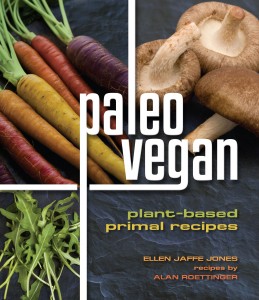 |
| Roasted Jerusalem Artichoke Soup: Pure Comfort Food |
Many years later, I began to see recipes appearing for “sunchoke soup,” nearly all of which featured heavy cream, presumably to supply richness after the vegetables had been boiled to death. I realized that I had better come up with my own way of making this soup, returning to the essence of that wonderful (if-it-ain’t-broke-don’t-fix-it) slowly cooked, slightly caramelized preparation that brings out the sweetness of both garlic and Jerusalem artichokes. I’m pretty satisfied for the moment with a method that begins with a brief sauteing, followed by oven-roasting, which requires far less hands-on attention. I think I’ll include it in my next book.
The name “Jerusalem artichoke” is somewhat elegant-sounding, but it’s a complete misnomer, since the plant is actually a species of sunflower native to North America, with no connection to an artichoke–although when cooked, it does have a flavor and texture reminiscent of artichokes. “Sunchoke” is a more common name now, and I do use it sometimes, but I came across the other one first, and I guess it just stuck, so I use it in much the same way my wife uses “Xerox” as a verb for any kind of photocopying.






